INTERVIEWS
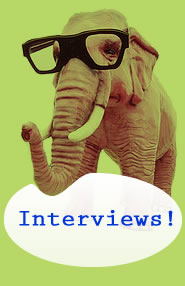 Now That's Wild Featured InterviewsLooking for information about animal science, evolution and conservation? Join us in interviewing top professionals who write for The New York Times, Forbes, Science News, The Economist and the Knight Science Journalism Tracker for MIT.
Our features showcase professionals making a difference in the world by inspiring others to take an active role in conservation in addition to promoting exploratory learning about the natural world. | |
INTERVIEW with Belinda Mzimba 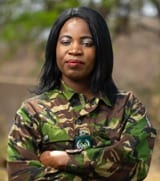
Belinda Mzimba is a member of the Black Mambas, South Africa's / World's first all-female anti-poaching unit, which patrols Olifants West Nature Reserve and Ekuthuleni Conservancy in the Greater Kruger Area. This region, part of the Kruger National Park, borders rural farms, making it a prime target for organized rhino poaching and local bushmeat hunters. While patrolling, Belinda and her team monitor cameras, collect snares, help injured animals, and report any illegal activity. Kruger National Park is the home to Africa's largest population of wild rhinos, and more illegal poaching than any other area in the region. In addition to daily patrols, the Black Mambas run the Bush Babies Environmental Education Programme, which teaches local school children about wildlife conservation. Through education and hard work, Belinda and the Black Mambas hope to make poaching a thing of the past, and restore natural, sustainable ecosystems while protecting endangered species. With boots on the ground, and a presence on the frontline, the Black Mambas have achieved a 63% reduction in poaching in the region since the Black Mambas have been deployed. For more information on The Black Mambas: Visit Black Mambas page |
|
INTERVIEW with Alessandro De Maddalena 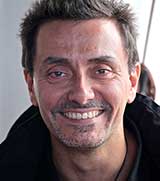
Alessandro De Maddalena is one of the world’s foremost shark experts. In addition to being a top researcher, he is also a writer, illustrator, photographer and shark expedition leader. Alessandro attended the University of Milan were he obtained a ‘Dottore Magistrale in Scienze Naturali’ and earned a ‘Laurea Magistrale’ (Master in Science) from the same university. His research field of study and thesis was on the presence of great white sharks in the Mediterranean Sea. Presently, Alessandro serves as an adjunct professor of Vertebrate Zoology for the post-graduate courses in Marine Science at the University of Milan-Bicocca, Italy. He is also a collaborator for Apex Shark Expeditions (South Africa), Rodney Fox Shark Expeditions (Australia) and Strφmshlmen Sjφsportsenter (Norway), and has hosted over 40 expeditions in the study of marine animals. During his time on these expeditions, Alessandro teaches courses in shark biology (in South Africa and Australia) and orca biology (in Norway). As part of his profession, Alessandro serves as the curator of the Italian Great White Shark Data Bank, a founding member of the Mediterranean Shark Research Group, regional investigator of the Global Shark Attack File, and an ambassador of the Undersea Soft Encounter Alliance. In addition to his teaching, Alessandro is the author or co-author of 20 books on sharks, 35 research reports in peer reviewed scientific journals and 82 articles in popular and professional magazines that are published in 18 nations. His photography and illustrations of sharks and other marine animals have appeared in numerous books, science journals, and popular magazines. A list of collaborated projects for specific magazines include Sub, Mondo Sommerso, Il Pesce, The World and I, EuroFishmarket, Aqva, Quark, Airone, Rivista Marittima, National Geographic Italia, Dive New Zealand, Dive Pacific, Annales, Biologie in unserer Zeit, Unterwasser, Tauchen, Duiken, Apnea, Plongeurs International, Oceanorama, Enviromagazin, and Mojesabz. Alessandro continues to lecture for many universities, museums and diving associations all across Europe and is touring globally in 13 different countries with over 85 scheduled lecture dates. Visit Alessandro's website |
|
INTERVIEW with Bonnie Gruenberg 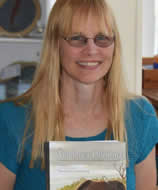
Bonnie Gruenberg is a woman of many passions and interests. Her lifetime fascination with horses and her interests in writing, wildlife biology and ecology gave rise to her many books about the wild horses of the Atlantic coast. She is an avid photographer, specializing in nature, wildlife, and mother-baby subjects. She is an artist who works in many mediums including oils, watercolor, graphite and colored pencil, pen and ink, and acrylic. By profession, she is a certified nurse-midwife. She has attended more than 1900 births in the hospital, free-standing birth center, and home, and writes books and training programs for midwives. Previously, she has worked as a registered nurse, a paramedic, artist’s model, and the manager of a riding stable. She also breeds Serama miniature chickens for exhibition. She lives with her husband and two horses on an idyllic farmette in Lancaster County PA. Visit Bonnie's website |
|
INTERVIEW with David Orenstein, Ph.D 
Dr. David I. Orenstein is a full professor of Anthropology at Medgar Evers College of the City University of New York. He is the co-author of two books, the 2015 Godless Grace: How Non-Believers are Making the World Safer Richer and Kinder, and the 2019 publication of Darwin’s Apostles. A primatologist by early training he has written for numerous national and international freethinker and science publications. Dr. Orenstein is also a noted civil and human rights activist, representing the American Humanist Association at the United Nations through the NGO/DPI program, and is a sought after speaker on human rights, science education and evolution acceptance. Dr. Orenstein, is also an ordained humanist chaplain, who serves on the Board of several local and national organizations. Including, The Secular Humanist Society of New York; The Broader Social Impacts Committee of the Hall of Human Origins/Smithsonian Institution, and also the Center for Freethought Equality. |
|
INTERVIEW with Jerry A. Coyne, Ph.D 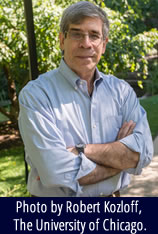 Jerry A. Coyne, Ph.D is a Professor Emeritus in the Department of Ecology and Evolution at the University of Chicago and a member of both the Committee on Genetics and the Committee on Evolutionary Biology. Jerry received a B.S. in Biology from the College of William and Mary. He then earned a Ph.D. in evolutionary biology at Harvard University in 1978, working in the laboratory of Richard Lewontin. After a postdoctoral fellowship in Timothy Prout's laboratory at The University of California at Davis, he took his first academic position as assistant professor in the Department of Zoology at The University of Maryland. In 1996 he joined the faculty of The University of Chicago. Jerry's work is focused on understanding the origin of species: the evolutionary process that produces discrete groups in nature. To do this, he uses a variety of genetic analyses to locate and identify the genes that produce reproductive barriers between distinct species of the fruit fly Drosophila: barriers like hybrid sterility, ecological differentiation, and mate discrimination. Through finding patterns in the location and action of such genes, he hopes to work out the evolutionary processes that originally produced genetic change, and to determine whether different pairs of species may show similar genetic patterns, implying similar routes to speciation. Jerry has written over 115 refereed scientific papers and 130 other articles, book reviews, and columns, as well as a scholarly book about his field (Speciation, co-authored with H. Allen Orr). He is a frequent contributor to The New Republic, The Times Literary Supplement, The New York Times, The Washington Post and other popular periodicals. In addition, Jerry has served as President and Vice President of the Society for the Study of Evolution and as Associate Editor of Evolution and of The American Naturalist. He is the author of the book and blog, Why Evolution is True and is a highly respected scientist. |
|
INTERVIEW with Zach Coker
"Everyone in the world has the right to enjoy these animals." |
|
INTERVIEW with Jessica Dimuzio, VMD
Visit Jessica's website: naturetalesandtrails.com |
|
INTERVIEW with Faye Flam
See Faye’s interview with Now That’s Wild to learn more. Visit Faye's website: fayeflamwriter.com |
|
| If you truly love nature, you will find beauty everywhere. |
|

 Zach Coker is a paleo artist breathing new life into incredible animals from Earth's majestic past and introducing new animals to science. His list of commissioned works include projects for companies specializing in world class fossils, including Pangea Fossils in Canada and Deep Water Megs in Florida. His paintings and drawings are vivid and alive, giving insight into the world of paleontology and the animals that ruled a dynasty.
Zach Coker is a paleo artist breathing new life into incredible animals from Earth's majestic past and introducing new animals to science. His list of commissioned works include projects for companies specializing in world class fossils, including Pangea Fossils in Canada and Deep Water Megs in Florida. His paintings and drawings are vivid and alive, giving insight into the world of paleontology and the animals that ruled a dynasty. In addition, Zach is bringing dinosaurs to everyone with his campaign, Bringing Dinosaurs to the Classroom, a project creating 3D dinosaur replicas for tactile education programs for schools that can be purchased or rented. These replicas are scientifically accurate and are available to educational programs everywhere, including low socioeconomic areas that cannot afford field trips to big museums.
In addition, Zach is bringing dinosaurs to everyone with his campaign, Bringing Dinosaurs to the Classroom, a project creating 3D dinosaur replicas for tactile education programs for schools that can be purchased or rented. These replicas are scientifically accurate and are available to educational programs everywhere, including low socioeconomic areas that cannot afford field trips to big museums. 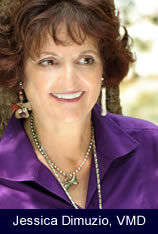 Dr. Jessica Dimuzio graduated from the University of Pennsylvania School of
Veterinary Medicine, specializing in wildlife preservation. She has conducted research on
elephants, rhinos, and wild baboons and taught conservation programs in Africa, Asia,
and North America. Dedicated to wildlife conservation, Dr. “D.” loves to get kids excited
about wildlife and their natural habitats through her writing, non-fiction storytelling,
classroom talks, and nature walks. She provides these programs through Nature Tales and
Trails, LLC, the company she founded in 2011.
Dr. Jessica Dimuzio graduated from the University of Pennsylvania School of
Veterinary Medicine, specializing in wildlife preservation. She has conducted research on
elephants, rhinos, and wild baboons and taught conservation programs in Africa, Asia,
and North America. Dedicated to wildlife conservation, Dr. “D.” loves to get kids excited
about wildlife and their natural habitats through her writing, non-fiction storytelling,
classroom talks, and nature walks. She provides these programs through Nature Tales and
Trails, LLC, the company she founded in 2011. What is “Evolution” anyway and why should we care? The mere word “evolution” conjures up images in the mind of the public from dinosaur movies to something vaguely half-man-half-ape. Science writer Faye Flam writes columns and blogs explaining how evolution affects your everyday life, from your health to your livelihood. In her former column for the Philadelphia Inquirer called Planet of the Apes, she explained how evolution has shaped our behavior, dietary needs and health problems in regards to our 4 billion years of evolutionary history and its relationship with all organisms on our planet.
What is “Evolution” anyway and why should we care? The mere word “evolution” conjures up images in the mind of the public from dinosaur movies to something vaguely half-man-half-ape. Science writer Faye Flam writes columns and blogs explaining how evolution affects your everyday life, from your health to your livelihood. In her former column for the Philadelphia Inquirer called Planet of the Apes, she explained how evolution has shaped our behavior, dietary needs and health problems in regards to our 4 billion years of evolutionary history and its relationship with all organisms on our planet.